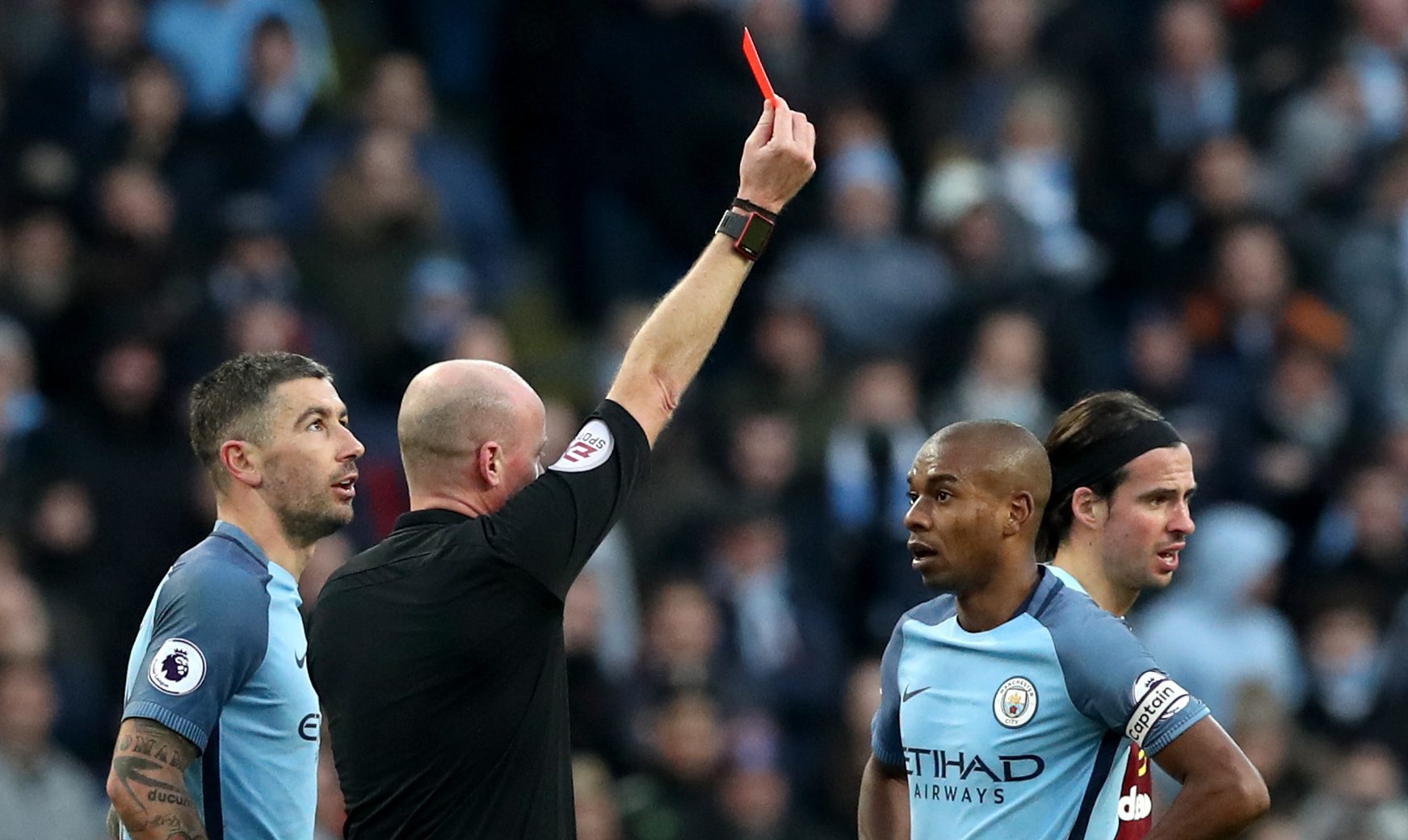
PLAYING with a man down isn’t easy, but Manchester City have shown that they’re experts when it comes to winning with ten men.
A delve into the stats over the past five seasons shows that City are the Premier League’s specialists when it comes to dealing with a player being red carded.
They’ve won an impressive 70% of matches in which they’ve finished a player light.
The findings, from betting aggregator Bet-BonusCode.co.uk, also revealed that the Sky Blues have the best scoring record when a man down.
In nine of the 10 games which saw a City player receive a red card, the Manchester club still scored another goal after their numbers were reduced.
In addition, City have had the earliest dismissal while still going on to win a game. Vincent Kompany’s sending off after just 10 minutes against Hull City during the 2013/14 season still saw them go on to win the match 2-0.
Across the city, rivals United don’t have such a good record.
They’ve never scored after a sending off over the last five years, with 12 red cards in total.
It’s a similar story for Watford, who were a man light during eight games.
Arsenal have had to play the greatest amount of time without a full 11, facing 615 minutes of Premier League football while a man down. This equates to almost seven whole matches over the five-year period, or 1.4 games per season.
It seems practice makes perfect though as Arsenal have an impressive 44%-win rate after losing a man, second only to Manchester City.
West Ham are the most sinned-against team, with opponents receiving 22 red cards in the last five years, with Chelsea following closely behind on 21.
Fans of the Blues and local rivals Tottenham can feel pretty confident when the opposition loses a player – both sides go on to win 86% of games, more than any other Premier League side in the last five years. Chelsea have also only lost on 5% of occasions where they have a man advantage, with Spurs on 7%.
Burnley supporters though should not get their hopes up when they see the opposing team go down to 10 as the Clarets have failed to win in each of these five games, losing 60% of the time. They also concede the most to 10 men at an average of 0.6 goals per game.
Swansea City have the most impressive defensive record against a weakened side. They have faced the most games without conceding a goal to a 10-man team (10 matches).
Newcastle have picked up the most red cards against one club, having racked up a total of six dismissals in games against Liverpool. Arsenal also see red often when facing Chelsea, as do Sunderland against Hull (both four red cards).

Enjoy the convenience of having The Sunday Post delivered as a digital ePaper straight to your smartphone, tablet or computer.
Subscribe for only £5.49 a month and enjoy all the benefits of the printed paper as a digital replica.
Subscribe